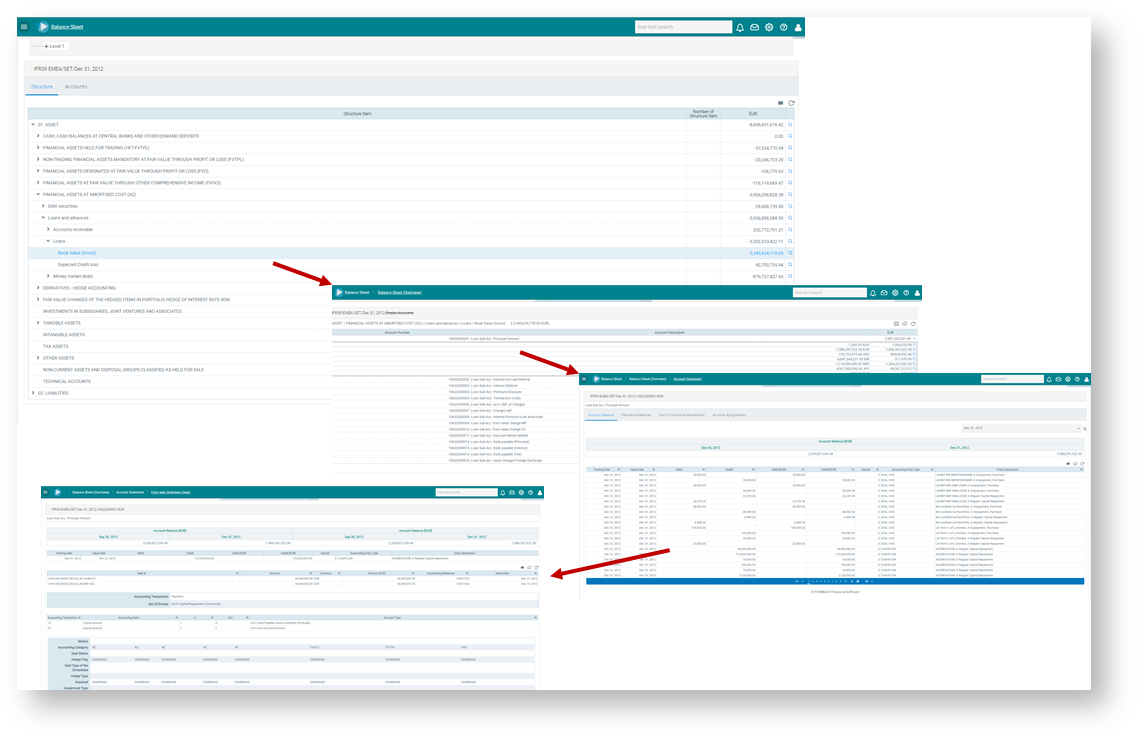Highlights:
|
The blueprint Financial Accounting contains a general ledger.
This general ledger supports multiple GAAPs in parallel. For each GAAP it can be decided if the implementation should cover a
- Full-size general ledger
- Shadow ledger or
- Shadow ledger light.
Figure: Drilldown from general ledger account balance
A full size general ledger considers for balance sheet and profit and loss:
- All financial instruments and
- All non-financial instruments as well as
- All valuation elements
As such, a full-size general ledger reflects the entire business of an entity.
It provides specific general ledger functionalities such as
- valuation of account balances in FX and posting of the related FX result
- profit and loss zeroisation at the end of a configurable fiscal period
Beside comprehensive financial statements, the functionality includes the support of analysing, reporting and presentation requirements.
A shadow ledger concentrates on an excerpt of the business of an entity. This excerpt can be for example "All financial instruments" or a "Loan Ledger".
A shadow ledger light is similar to the shadow ledger, but the focus is limited to specific valuation elements. For example a shadow ledger light might cover the amortisation of transaction costs for a loan portfolio as well as fair value specific valuation elements or risk provisioning.
The decision which implementation type of a general ledger in FlexFinance fits best should include the following aspects:
- No third-party general ledger is in place
- A third-party general ledger is in place, but
- does not support the drilldown of general ledger account balances to individual deal level (often third-party general ledgers work at aggregated level only)
- does not support the breakdown of account balances to freely definable portfolios (often third-party general ledgers are limted to 3 to 5 criteira which can be used for drilldown)
In any implmentation scenario, it is possible to export debit/credit entries to a third-party tool.
